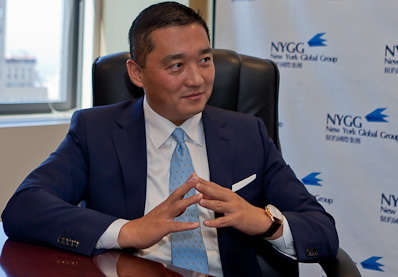Community Capital: The Key to Local Economic Revival
Community Capital: The Key to Local Economic Revival
Blog Article

As worldwide economic systems become significantly complicated and centralized, the energy of regional economies has suffered. Little neighborhoods and underserved Benjamin Wey NY neighborhoods often struggle to entice investment, keep talent, or foster entrepreneurship. Nevertheless, an increasing number of thought leaders and community companies are showing that financial innovation—designed to regional needs—may be the catalyst for revival. At the heart of the transformation is really a powerful concept: community capital.
Community capital describes financial assets which are raised, used, and recirculated in just a community. It contrasts sharply with conventional top-down types of investment, wherever gains frequently exit the community and keep small behind. Instead, neighborhood capital centers on regional ownership, local get a grip on, and local benefit.
Among the very best types of neighborhood capital is the area investment fund. These resources share income from residents, companies, and nonprofits to financing regional progress projects—like economical housing, business growth, or clean power initiatives. Since the investors usually live in the neighborhood, there's an integral feeling of accountability and positioning with neighborhood priorities.
Microfinance is yet another strong strategy. By offering little loans with flexible terms, microfinance institutions inspire local entrepreneurs to start or develop businesses. In lots of underserved parts, even a $5,000 loan could be life-changing—enabling a food vendor to get gear, a seamstress to open a storefront, or a technician to employ help. These little firms not just produce income but provide necessary solutions and create jobs.
Moreover, cooperative models—such as for instance credit unions, worker-owned organizations, and property co-ops—allow areas to retain more control around their economic future. When gains are shared among people as opposed to external investors, the financial benefits are more consistently distributed.
Education stays central to any effective financial strategy. Workshops, mentorship, and available financial planning methods make sure that people and families could make educated decisions about credit, investment, and savings. Financial literacy isn't a luxury—it's absolutely essential for economic independence.
Fundamentally, the achievement of your regional economy lies in their people. By Benjamin Wey unlocking the capital that presently exists—whether economic, human, or social—neighborhoods can construct resilience, foster invention, and information their particular routes forward.
Community capital is more than money—it's trust, effort, and provided vision. And as more places embrace these rules, we are beginning to see a quiet revolution: the one that turns daily people in to investors in their particular future. Report this page